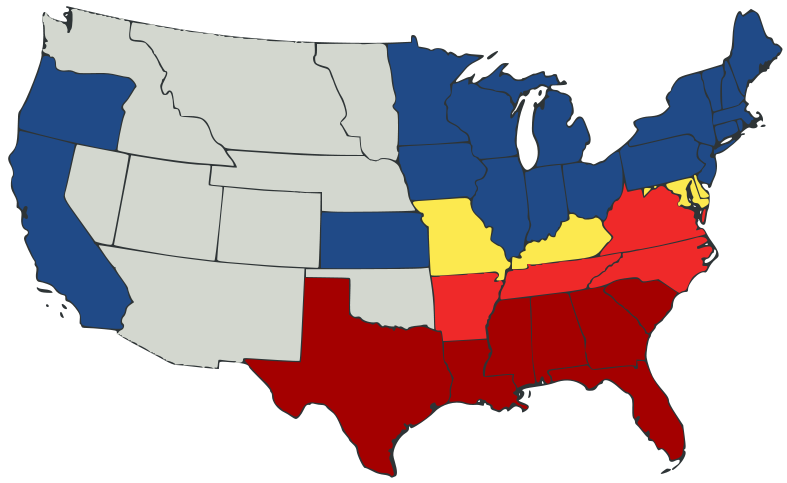
Capability Maturity Model Integration (CMMI) Levels 1-5

Maturity levels are well-defined evolutionary plateaus towards attaining a mature software process. Every maturity level delivers a layer in the foundation for continuous process improvement. There are five maturity levels that are designated from numbers 1 all the way to 5. These include the Initial, Managed, Defined, Quantitatively Managed, and Optimizing. In this article, we will provide more details about each of these maturity stages. It is good to understand the process areas that are related to all these maturity levels. If you want to evaluate your level of success in implementing them in your organization, just contact Internal Auditing Pros. These are the best experts when it comes to the implementation and audit of Capability Maturity Model Integration (CMMI) Levels 1-5.
All the maturity levels comprise a set of predefined process areas. Experts measure these maturity levels based on the attainment of the generic and specific goals that apply to every predefined set of process areas. You will get the characteristics of all these maturity levels in the section below.
The effects of the process improvements that you deploy are evaluated and measured against the quantitative process improvement goals. Both the organizations’ set of standard processes and defined processes are targets of the measurable improvement activities. At maturity level 5, the concern on the process is to address the common causes of changing the process and process variation.
As we sum up, it is good to understand that you should never skip any of these maturity levels. It is the best way to finish up this Capability Maturity Model Integration (CMMI) Levels 1-5 guide. Every maturity level provides the right foundation for the effective implementation of processes at the next level. The chances of success for the higher levels are low in the absence of the discipline that the lower levels provide. In addition, a noisy process will obscure the effect of innovation. For the best implementation and audit of these 5 levels in your organization, all you need to do is call the Internal Auditing Pros.
1.Initial: Maturity Level One
Processes are normally chaotic and ad hoc at maturity level one. Usually, the organization doesn’t provide a stable environment. Success in the organization relies on the heroics and competence of individuals in the organization and not on using proven processes.
Maturity level one organizations often produce goods and services that work. However, in most cases, they exceed the schedule and budget of their projects. Maturity level one firms are characterized by the tendency of over-committing, abandoning processes during the times of crisis, and being unable to repeat their past successes.
2.Managed: Maturity Level Two
At this maturity level, the organization has attained all the generic and specific goals of process areas of maturity level 2. It means that the organizations’ projects have made sure that the requirements are managed and the processes are performed, planned, controlled, and measured.
The process discipline that is reflected by maturity level two makes sure that the current practices are retained during the stressful moments. When you put all these practices in place, you perform and manage projects as per their documented plans.
At this level, services, work products, processes, and requirements are managed. The work product status and service delivery are visible to the management team at defined points. Commitments are set up among the necessary stakeholders and are modified as required. Works products are controlled and reviewed by stakeholders. The work services and products satisfy their specified objectives, standards, and requirements.
3.Defined: Maturity Level 3
The organization has achieved all the generic and specific goals that are assigned to maturity levels 2 and 3 at maturity level 3. Processes are well understood and characterized at this level as described in the methods, tools, procedures, and standards.
The scope of the procedures, process descriptions, and standards are the critical distinctions between maturity levels two and three. At maturity level two, process procedures and descriptions can be different in every specific instance of the process. At maturity level 3, procedures, process descriptions, and standards for a project are tailored from the set of the standard processes of the organization to suit a specific organizational unit or project.
The set of the standard processes of the organization include the processes that are addressed at maturity level 2 and 3. As a result, the processes which are performed across the organization are consistent apart from the differences that are allowed by tailoring guidelines.
At maturity level 3, the processes typically describe more rigorously and, in more detail, than level 2. At this maturity level, you manage projects more proactively using the understanding of the interrelations of detailed measures of the process and process activities, its services, and its work products. Internal Auditing Pros will help you through this process.
4.Quantitatively Managed: Maturity Level 4
The organization has attained all the specific goals for the process areas that are assigned at the maturity levels 4, 3, and 2 and the generic goals that are assigned to maturity levels 3 and 2. At this stage, you select the subprocesses that contribute to the overall performance of the process massively. The selected subprocesses are controlled using quantitative techniques like statistical.
Quantitative objectives for process and quality performance are used and established as criteria in management processes. Quantitative objectives are based on customer needs, organization, end-users, and process implementers. Process and quality performance are understood in the statistical terms and managed throughout the whole life of the process.
Detailed performance process measures are gathered and analyzed statistically. You identify the special causes of process variation, where appropriate, it corrects the sources of special causes to prevent the future occurrences,
Process and quality performance measures are incorporated into the repository measurement of the organization to support a fact-based decision-making process in the future. A critical distinction between maturity levels 3 and 4 is the predictability of the process performance. At level 4, process performance is controlled using various quantitative techniques and is predictable quantitatively. On the other hand, processes are only qualitatively predictable at maturity level 3.
5.Optimizing: Maturity Level 5
At this level, the organization has achieved all the specific goals for the process areas of levels 2, 3, 4, and 5 and the assigned generic goals for the maturity levels 2 and 3. The processes are improved continually based on the quantitative understanding of the most common causes of the inherent process variations.
The focus of maturity level 5 is to continually improve process performance through innovative and incremental technological improvements. You establish the quantitative process-improvement objectives for the organization. They are also revised continually to reflect changing business goals and utilized as a criterion for the management of process improvement.


